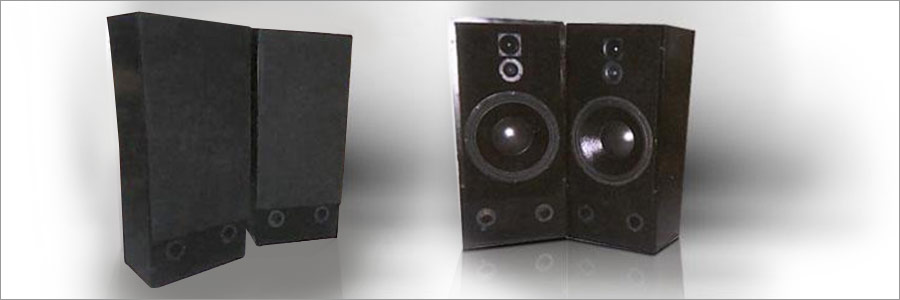
“Angel Fire 1” Series II-Morel 3-Way Loudspeakers
Designer: Scott Anderson
Project Time: 1-8 hours
Project Complexity: Hobbyist
Project Cost: $100-$500
Driver Selection
Much progress has been made on speaker design in recent years but the laws of physics dictate that if you want bass you must use large drivers. Yes I know that you can get good bass out of an 8″ driver but most have no soul and give a kind of mono tone response. So I selected an appropriate 15″ woofer. At first I had my doubts about this moderately priced driver but not any more this is a fine woofer for the money. The sound is rich and deep. But the real advantage to using a large woofer is dynamics, and this Dayton delivers all you could ask for. Music is reproduced with all the power and punch of the original. Electric guitars and drums sound like they are in the room with you. One of the first compromises I had to make was in cabinet size. This driver would be more at home in slightly larger box but I (read wife) had set a size limit prior to starting this project so I went with the realistic minimum cabinet volume for this driver. This driver has plenty of power handling so the next step was the hard part, finding a mid. The type of speaker I had in mind called for using either a horn or a dome so my options got narrowed down fast. Horns are fine in large rooms where the sound has room to spread out but not so good in my listening room. This left me with choosing a dome and lucky for me Morel had just what I needed, a high power, excellent sounding dome. I also happened on the tweeter at the same time and it looked like a likely candidate for testing so I sent in my order. The tweeter is a semi-horn design but does not suffer the pitfalls of typical horn tweeters and it has a very smooth sound. * Parts 277-047, 100-028 and 268-030 replace the original items due to availability. Parts Express has paid special attention towards maintaining the integrity of the original speaker design.
Amplifier/Crossover Configuration
Crossover design was a real challenge working from a text book starting point and swapping parts. I spent nearly two weeks tweaking and listening with help from my teenage kids we finally found the magic formula. After final assembly I did extensive listening tests with friends and family. We all agree the sound is right on.
Enclosure Assembly
I used pre-sanded pine project panels from Lowes. These are made up of edge glued 1″x2″ pine strips. We used to make PA speakers this way back in high school except we had to glue the panels ourselves. The advantage of this type of construction is that the laminated wood damps well and they are not too heavy to move. I can easily pick one up and move it by myself. Now you can buy ready made panels, this is a real time saver. The side panels measure 36″x 12″x 3/4″. The Top and bottom are cut from the same size panel to make two pieces 17 1/2″x 12″x 3/4″. The front and back are 36″x 16″x 3/4″. This method of construction only requires 4 saw cuts on the outside panels which saves time and limits mistakes. 1″x2″ select grade pine lumber is used for bracing and glue blocks. I ran these full length along all joints. I also ran cross braces at about the 1/3 point from each end of each panel and above and below each of the drivers. All of these are glued flat against the panels. The cabinet is assembled using butt joints and secured with titebond wood glue and drywall screws. Pre-drill all of your holes to keep the wood from splitting. Be sure to seal the inside of the cabinet with something. I used a 50/50 mixture of glue and water on the inside of the panels and silicone caulk on the joints. For extra damping I used Acoustic damping sheets on all panels between the braces. The enclosure is lined on all sides except the front baffle with 3 1/2″ fiberglass insulation. I used the new type that is encapsulated ( doesn’t itch). Screw holes are filled with wood filler and sanded smooth. I cut the driver holes using a jigsaw.The speakers are painted with black lacquer spray paint. The only power tools used where a circular saw, orbital sander, jigsaw and a cordless drill. Other options for building this cabinet could include plywood or MDF. If you’ve got the tools and want to try another material and/or finish then go for it. Driver Layout All drivers are mounted on the center line of the baffle in an MTW layout. Layout on 16″x 36″ baffle is: From top down 3″ – 7″ – 18 1/2″. The ports are 4 1/2″ up from the bottom and 3″ over from each edge. Drivers and ports are sealed in using 1/4″ weather stripping. I decided to cover the area of the front baffle inside the grill frame with automotive carpet to help kill diffractions. It seems to have worked. I used a piece of black carpet 16″x 28″. I tried several different driver layouts while developing this speaker and this one is the best. I don’t recommend offsetting the drivers but if you decide to try it be sure to keep the Domes in a straight line. The sound suffers badly otherwise. Grills Grill frames are made from 3/4″ square poplar with metal angle brackets on the corners. These are available at most hardware stores. The frames measure 17 1/2″x 30″. They are covered with black grill cloth from PE that is secured with 1/4″ staples. The grills are attached using Grill Guides also from PE.
Conclusion
The final product is an excellent sounding mid sized floor standing speaker. Sound levels are more than enough for a medium sized room with lots of headroom. My listening room is 13’Wx 18’Lx 10’H and the speakers will shake the floor with live volume levels and with no precivable distortion at less than 2/3 power with an 80w amp. Just the way we like it. My wife and I enjoy watching live concert DVD’s and have started a collection. That pastime was a driving force in this project and was fully rewarded with a sound that feels live. The speakers are used as part of a home theater system placed well away from the TV (no shielding) and work great for that as well. While these speakers where designed for rock music they also do very well with New Age, Jazz, and classical which we listen to from time to time. The sound stage is large and deep with fairly good imaging considering the wide baffle design. Trying different positions for the speakers we discovered that the sound stage is improved if the speakers are raised about a foot off the floor. YMMV I recommend at least an 80w amp for mid sized rooms, for larger rooms a 100 – 200w amp may be in order. I haven’t tried higher power amps yet but I’d guess with 250+ watts these would make good DJ speakers or could even be used in a small club. I have no way of testing the speakers other than listening so all I can tell you is they sound fantastic. I would like to get them tested someday. If someone in the DFW area has the gear and doesn’t mind doing it send me an e-mail. One final note, the drivers will require quite a bit of break-in time to realize their potential, especially the woofer.
About The Designer
I am 36 and live in the Dallas/Ft. Worth area. I work in the commercial construction business as a supervisor. I’ve been married 15 years and have 3 kids 2 of which are teenagers. I have been an avid music lover since childhood. And of course I love live rock music. If you’re wondering where the name for the speaker comes from… our house has the nickname “The Angel Fire Inn” because that’s the name of our street and because of it’s many teenage and other visitors that never seem to go home.
Project Parts List
|
Part # |
Description |
Qty |
|
295-130 |
1 |
|
|
287-020 |
1 |
|
|
1 |
||
|
260-387 |
1 |
|
|
091-1245 |
1 |
|
|
260-771 |
1 |
|
|
260-367 |
1 |
|
|
260-335 |
1 |
|
|
266-365 |
1 |
|
|
266-315 |
1 |
|
|
027-582 |
1 |
|
|
027-602 |
1 |
|
|
027-542 |
1 |
|
|
027-552 |
1 |
|
|
027-564 |
1 |
|
|
005-2 |
1 |
|
|
005-20 |
1 |
|
|
005-4 |
1 |
|
|
005-8 |
1 |
|
|
100-028 |
1 |
|
|
268-030 |
Sonic Barrier Lightweight Vinyl Sound Damping Sheet 10″ x 13 |
1 |

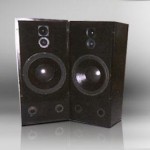
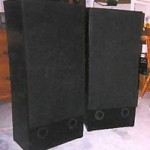

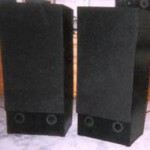
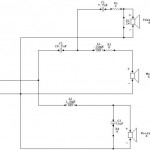
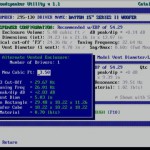
+ There are no comments
Add yours